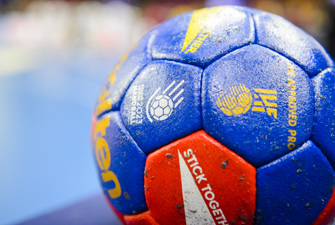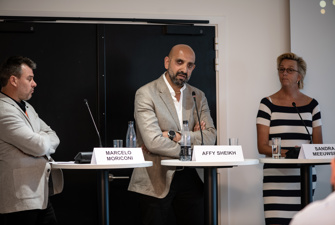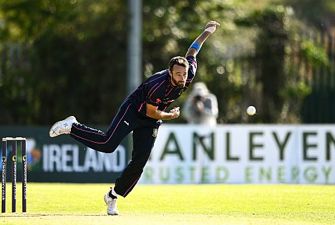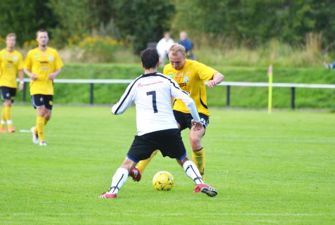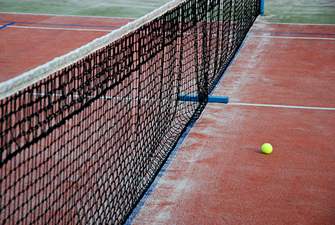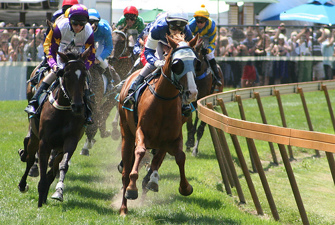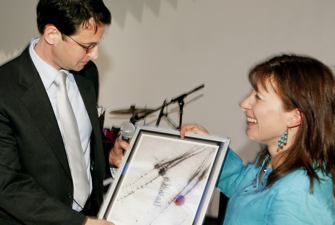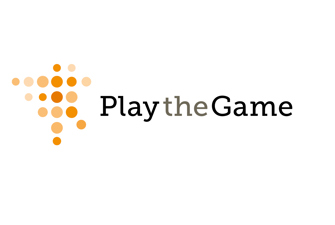New typology of sports manipulations broadens definition of match-fixing
An international group working under the auspices of the Council of Europe has produced a typology that offers actors working with sports integrity a new terminology for different ways of manipulating outcomes of sports matches.
Match-fixing is often depicted as a shady character looking to manipulate a game for betting reasons, but that is only one of many different types of sporting manipulations.
Categorising and defining this slippery range of threats to sport has often been as hard as identifying the actual fixers but the Council of Europe (CoE) has made it easier with a new Typology of Sports Manipulations that identifies different types of manipulations and their causes and drivers.
The impetus for creating a typology of match-fixing came from the network of national platforms against manipulation of sports competitions established by the CoE – often referred to as the Group of Copenhagen. At a meeting in 2017, members of the national platforms in Belgium, Cyprus, France, Portugal and Switzerland joined forces to develop a tool that would define sports manipulations.
“The word ‘match-fixing’ is used in various ways and everyone has their own take on the matter,” says Christine Casteels from the Belgian Federal police and a steering committee member of her country’s national platform against manipulations of sports competitions.
“We decided that for the sake of efficiency that we needed to agree on terminology so we all understood the same thing. Match-fixing is a generic term and very often linked to betting. That’s why the group came together because we needed to agree on a common understanding of the definition in the Macolin Convention.”
The group carried out survey work and recruited two experts for guidance. Kevin Carpenter, a British lawyer and academic specialising in integrity and governance, particularly in the sports sector, had initial input. This was followed by expert advice from lawyer and former Europol officer Norbert Rubicsek, who now runs the CSCF Foundation for Sports Integrity.
Australia’s National Integrity of Sport Unit joined the working group in 2019, along with the Sports Betting Intelligence Unit (SBIU) at the Gambling Commission of Great Britain, which was asked to take on the lead of the project in 2020.
“Collaboration between national and international stakeholders is key to tackling the phenomenon of sports manipulation,” says Steve Paine, who heads up the Gambling Commission of Great Britain’s SBIU, which is the UK National Platform’s intelligence hub.
Three main types of sporting manipulation
The completed typology identifies three different types of sporting manipulation:
- Direct interference in the natural course of a sporting event or competition, such as manipulation by individuals involved in the event.
- Modification of an athlete's identity or personal information in order to influence the natural course or outcome of a sports competition, such as personal data, physical characteristics and mental or physical capabilities.
- Modification that is non-compliant with criminal laws or sport rules relating to playing surfaces, equipment, athlete physiology and/or a sporting venue, including playing surfaces, equipment, athlete physiology and sporting venues.
These three types of manipulation are then sub-categorised using four criteria relating, which relates to the instigator or instigators of the manipulation:
- Exploitation of governance
- Exploitation of power or influence
- External influences
- Opportunistic
The table below provides examples of all types of manipulation.
Instigator
|
Type 1:Direct interference in the natural course of a sporting event or competition i.e. deliberate mani-pulation by individual(s)involved in the event |
Type 2:Modification of an athlete's identity/personal information |
Type 3:Modification that is non-compliant with criminal laws or sport rules relating to: i. playing surfacesii. equipmentiii. athlete phy-siologyiv. sporting venue |
|
|
Examples |
Examples
|
Examples
|
Exploitation of governance
|
Type 1AThe owners of two sports clubs agree the outcome of a sports competition and instruct their teams to ensure that outcome is achieved. |
Type 2AThe head of an international sports federation instructs a coach to include an athlete in their squad who was under the minimum age eligibility criteria for a competition. |
Type 3AThe CEO of a sports club instructs ground maintenance staff to tamper with a playing surface before a competition which they know will have a detrimental impact on the performance of the opposing team. |
Exploitation of power/influence
|
Type 1BA sponsor of a club promises a new sponsorship contract to a player of a rival club if they “help” their team to lose their next game. |
Type 2BA sports federation involved in an U17 international com-petition includes older, more experienced athletes in their squad in an attempt to ensure that they win. |
Type 3BEquipment is unfairly modified by club officials in order to gain an advantage for their own athletes. |
influences
|
Type 1CAthletes manipulate match outcomes at the direction of external match-fixers e.g. organised crime groups |
Type 2CAn athlete is given a false identity by an organised crime group. The false ID allows them to play sport in a country in which they would not ordinarily be allowed to compete. |
Type 3CAn organised crime group forces groundsmen to switch off floodlights during in an evening event. |
Opportunistic action
|
Type 1DTwo athletes playing each other agree the final outcome of an event before the start of play. I.e. they agree who will win the event |
Type 2DAn athlete knowingly modifies their personal data to enable them to compete in a competition classification for which they are not eligible. |
Type 3DAthletes tamper with a ball during an event to make it perform differently to what their opponents expect. |
Source: Typology of Sports Manipulations – Resource Guide
The two sets of definitions can be cross-referenced to categorise a specific manipulation, which will then allow users to find out information on the following:
- The instigator(s) i.e. those persons who drive the manipulation to take place
- The executor(s) i.e. those persons who are directly involved in making the manipulation happen
- What happens on and off the field
- How the attempted aim is achieved
- Why the instigator(s) organised the manipulation
- Why the executor(s) carries out the manipulation
While doping has been recognised by the Group of Copenhagen as a form of competition manipulation, this is not included in the typology. However, other forms of manipulation such as tax evasion are included.
Bart Wassenaar from the Fiscal Information and Investigation Service in the Netherlands, who was also involved throughout the development of the tool, explains:“We are talking about manipulating sports competitions and that’s why we included tax evasion as clubs can use this to gain an unfair advantage on the pitch.”
The typology is adopted by Interpol
With a plethora of bodies working on tackling sporting manipulation from the United Nations Office on Drugs and Crime to the International Olympic Committee to Transparency International, the ambition amongst the tool’s originators was to produce a standard typology, and that ambition has already enjoyed some succes.Although little publicised by the Council of Europe, the typology has been widely welcomed, and the framework has been adopted by a number of bodies engaged in the fight against sports manipulation. For instance, an Interpol webinar held on 15 October 2020 about the typology was attended by 160 people from more than 50 countries in Europe, Asia, Africa and South America.Claudio Marinelli, criminal intelligence officer at Interpol’s integrity in sports team says: “The webinar has provided a clear and uniform definition of the concept of competition manipulation, its different typologies and actors involved; as well as an extremely useful tool for investigators, primarily from law enforcement but also for sport fact-finders.”
Corentin Segalin, head of prevention against sports manipulation for French online gaming regulator ARJEL, who was also involved in developing the tool, says:“It’s very important to have this typology as the Council of Europe are working with the national platforms, where many bodies are represented. I hope we will have other notes that can be used by everybody.”
Others praise the typology for broadening the understanding of match-fixing.
“This typology serves to remind that the Macolin Convention is not focused on betting-related manipulation,” says Pim Verschuuren, an associate research fellow specialising in international sports governance, integrity and geopolitics at the French Institute for International and Strategic Affairs (IRIS).
Cassandra Matilde Fernandes, legal and projects manager at Global Lotteries Monitoring System, says:
“The tool provides uniform terminology and the provision of essential elements for the configuration of the case itself, for example the roles of the "executor" and the "instigator" of manipulation, and the need to identify a clear financial benefit underlying the evidences, be it direct or indirect. The classification is also aimed at supporting data collection and statistical analysis.”
Next steps include guidance and an implementation packLorraine Pearman, betting integrity lead at the Gambling Commission says:“This has been a really interesting project to work on and we are very proud of what we have achieved. Experts from around the world have contributed to the development of the typology, and we hope it will be a useful tool to help the collaborative efforts of all those involved in working in national platforms to protect against the very real threats of competition manipulation.”Ms Casteels from the Belgian Federal police adds:
“If you combine everything together, we have a good tool where, for example, stakeholders in sports can see everything that can go wrong. It is easy to use, so they can go through the types and see if the problem needs to involve law enforcement, can be handled by an association or is just part of sports tactics.”
She points out that the next stage is to offer guidance to sports organisations on how they can use it.
This will include an implementation pack based on a recent pilot project, which will aim to help national platforms and others to apply the typology within their own jurisdictions. This should be finalised in the next few months.
The working group also plans to further develop the interactive tool into a web-based version and to expand the definitions if the need arise.
“The working group is still in place and if there are new typologies, we can change it,” says Bart Wassenaar.
More information
Learn more about the Typology of Sports Manipulations







